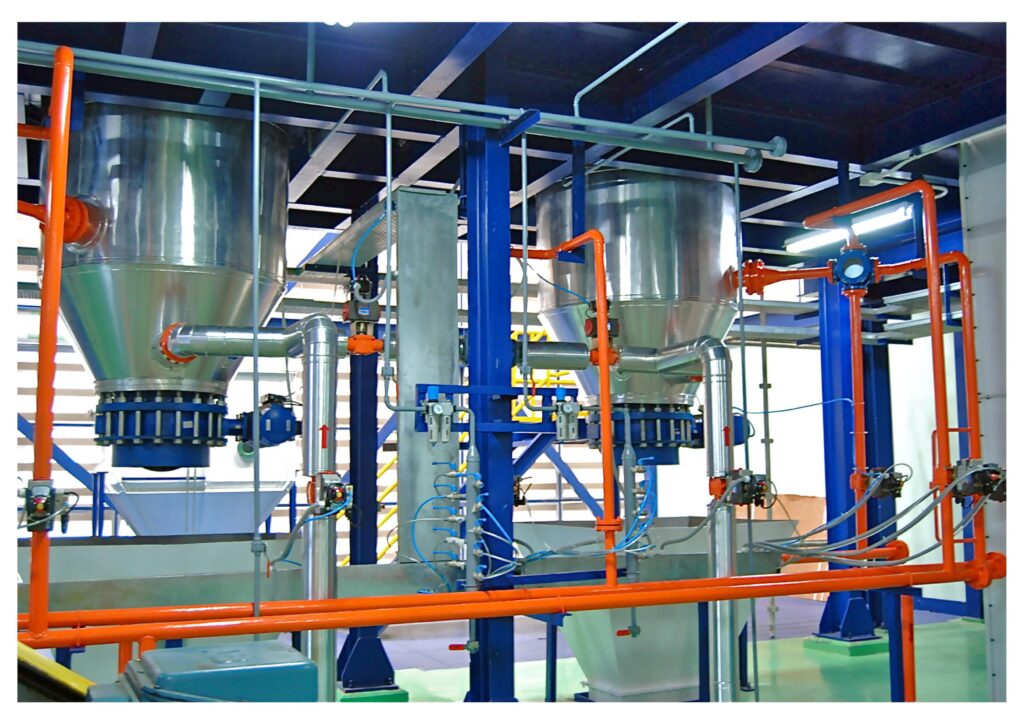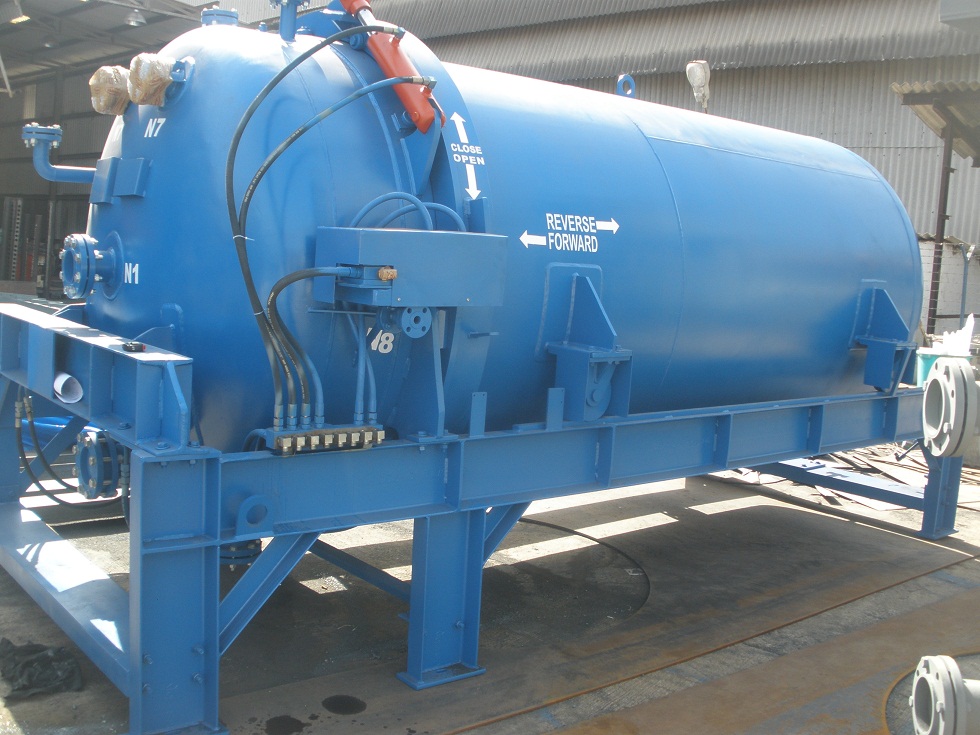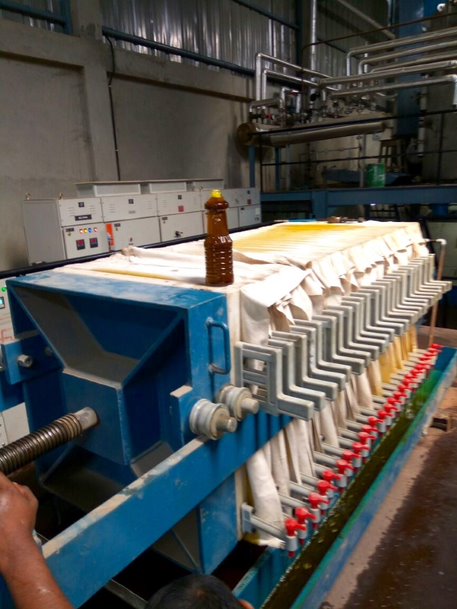Pressing the oilseeds crushes the oil glands in the seeds, separating the oil from the meal. But in this process, particles of the crushed seed also mix with the oil. These undesirable particles, also called ‘foots’, must be filtered out of the oil before refining. There are many techniques to filter the ‘foots’ out of the oil, depending on how ‘clean’ you want the oil to be. United offers filtration mechanisms such as vibro sieve filtration, screening tank, horizontal and vertical pressure leaf filtration, and plate and frame filtration. Each filtration technique has unique features, which make them suitable for different types of oilseeds.
United provides screening tanks that can process 20 to 100 tons of screw press foots oil (oil with up to 10% solids) per day. The screening tank reduces the oil’s sediment ratio before final filtration in a decanter. Our screening tanks provide 30 to 60 minutes of settling time with buffer storage. The solids are removed from the tank through a dredging mechanism that drags the solids across a profiled wedge wire screen and feeds it into a discharge conveyor. The oil is returned to the tank and extracted from the top for final clarification.
Vibro sieves are circular gyratory screens that separate particles based on their sizes. United offers vibro sieves in different designs, capabilities, and configurations, with higher throughput than conventional sieves. Depending on the type of oil intended to be filtered, the vibro sieve may be single-layered, double-layered, or multi-layered, providing maximum efficiency. The oil is separated from solids, and they exit the vessel through separate discharge systems. Our vibrio sieves take much less space than conventional sieves and can be fitted into small areas in the production line while still providing high sieving capacity.

Pressure leaf filters, used for cake filtration, are of two kinds – vertical pressure leaf filters and horizontal pressure leaf filters. In a vertical pressure leaf filter, several filter leavers are installed on a manifold. The slurry is fed into the vessel and pushed through the filter leaves. The solids get retained on the filter leaves while the liquid exits the vessel through the manifold. Later, the filter cake is sluiced off. The major advantage of a vertical pressure leaf filter over a horizontal pressure leaf filter is that the filter cake can be removed via gravity.
Horizontal pressure leaf filters are better suited for hazardous environments. These autoclaved vessels are used to process cakes that require a higher degree of safety, like in the case of flammable or corrosive slurries. These features are not found on vertical filter presses because there, the vessel has to be opened to the environment, and the plates shifted one by one to allow the cake to discharge. United offers well-designed, compact, highly efficient, vertical, and horizontal pressure leaf filters that can be customized for different types of oilseeds.


A plate and frame type filter uses a type of filter called a ‘flush plate’, where a solid, flat plate, covered by a filter cloth and enclosing a hollow frame, acts as a filter. The filter plates are held together in rows with the help of a metal skeleton. When the suspension is pressed against the filter intermediary (filter cloth, filter membrane, or filter paper), the solids are separated, which collect inside the frame on the filter cloth, as a ‘filter cake’ while the filtrate is discharged through a pipe.
Plate and frame type filters are useful for cases where the filtration area is more important than the volume of the filtrate. United offers totally enclosed plate and frame filters, which eliminate product loss. We can provide standard depth filter dimensions varying from 200 x 200mm to 1200 x 1200 mm and more for maximum scalability. Mechanical dehydration is available for a more dry, compact cake. We can also provide options for automatic plater shifters and cleaning portals for more efficient operation.